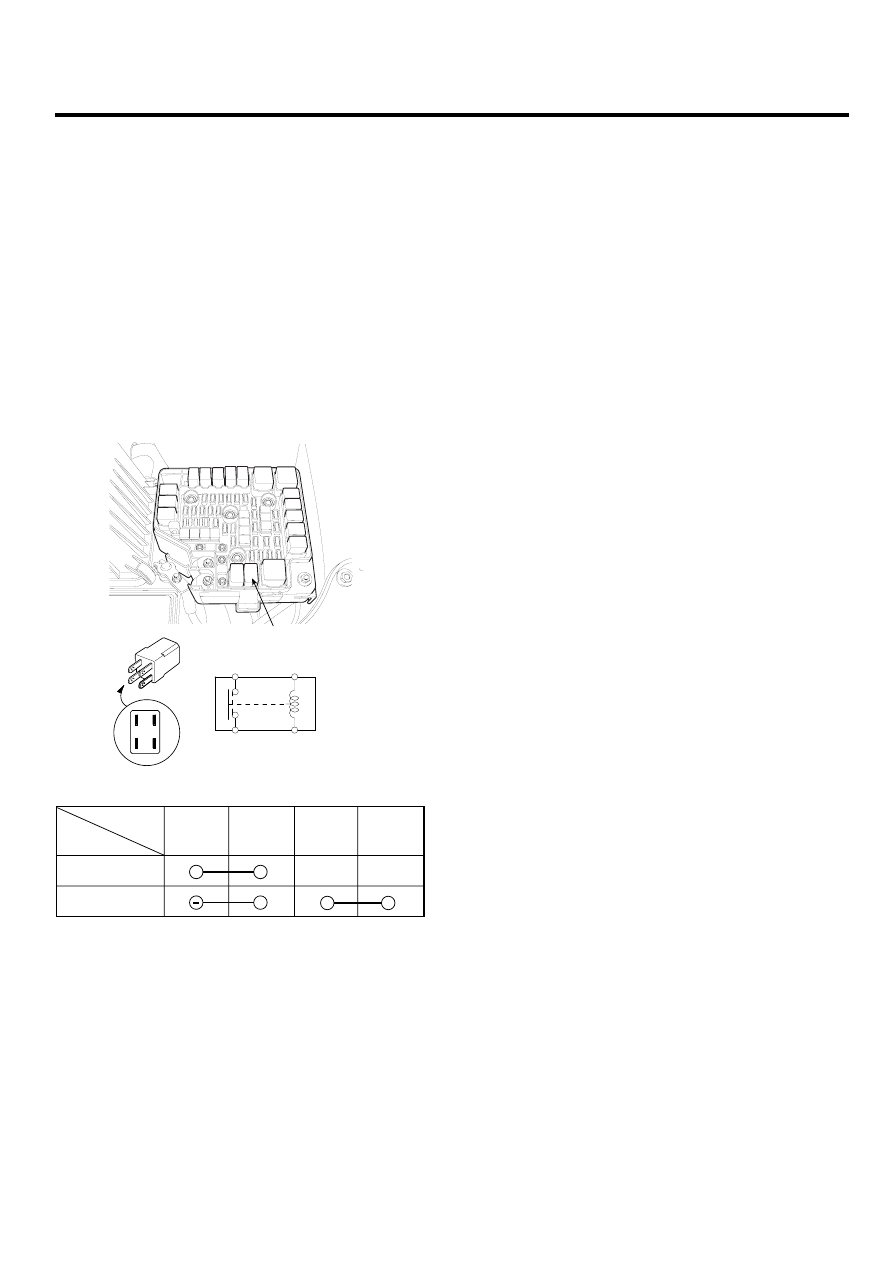Hyundai Santa Fe (2006 year). Manual - part 174

WINDSHIELD DEICER
BE -157
WINDSHIELD DEICER RELAY
INSPECTION
EF0EF7EE
1.
Disconnect the negative (-) battery terminal.
2.
Remove the windshield deicer relay from the engine
room relay box.
3.
There should be continuity between the No.30 and
No.87 terminal when power and ground are con-
nected to the No.85 terminal and No.86 terminal.
4.
There should be no continuity between the No.30
terminal and No.87 terminal when power is discon-
nected.
86
30
87
85
30
86
87
85
A
SCMBE6306D
85
86
30
+
87
Disconnected
Connected
Terminal
Power
SCMBE6307L